Key Takeaways
- Massage therapy is a natural, drug-free option to reduce stress and anxiety by calming the nervous system and lowering cortisol levels.
- Different types of massage, such as Swedish, aromatherapy, and deep tissue, offer benefits for relaxation, emotional balance, and muscle tension relief.
- Choosing the proper massage and preparing adequately for your session can improve the overall experience and support the long-term effects of mental and physical well-being.
Stress and anxiety are two of the most impactful factors in people—affecting both mind and body. That’s one of the reasons why so many people are choosing massage therapy for sore muscles and peace of mind. Massage, more than just a luxury, is a natural and drug-free remedy for mental tension.
It offers numerous benefits, including lowering cortisol levels, calming the heart rate, and promoting relaxation in the body. For many people, an hour on the massage table is a way to reset their entire body and calm their racing thoughts.
How Massage Helps with Stress and Anxiety

Massage therapy works directly on the nervous system by helping the body and mind to calm down. When you receive a massage, gentle pressure and soothing touch activate the parasympathetic nervous system, also known as the “rest and digest” system.
This activation slows the heart rate, lowers blood pressure, and eases muscle tension to shift the body away from the fight-or-flight state caused by chronic stress.
One of the most significant effects of massage is the reduction of cortisol, the primary stress hormone. High cortisol levels are closely linked to anxiety, poor sleep, and a weak immune system.
Studies have shown that regular massage therapy can help reduce cortisol levels and increase the production of “feel-good” chemicals, such as serotonin and dopamine. These changes can contribute to a deeper sense of well-being and balanced emotional health.
Additionally, touch is one other crucial aspect of massages. The human body responds instinctively to safe and nurturing contact. The pressure during massages, whether light or deep, stimulates sensory receptors in the skin and muscles by sending calming signals to the brain.
Massage resets the entire nervous system by improving sleep cycles, mood, and the ability to manage daily stressors naturally.
Best Massage Types for Stress and Anxiety
When it comes to easing your stress and anxiety, there are several types of massage therapy designed to promote relaxation and restore balance to your body and mind.
Swedish massage is known for its calming, gentle flow, while aromatherapy soothes the senses through scents. Deep tissue massage pinpoints tension deep in the muscles, while hot stone massage relaxes your muscles with gentle heat. Lastly, reflexology and shiatsu relieve stress through the application of touch and pressure.
Swedish massage
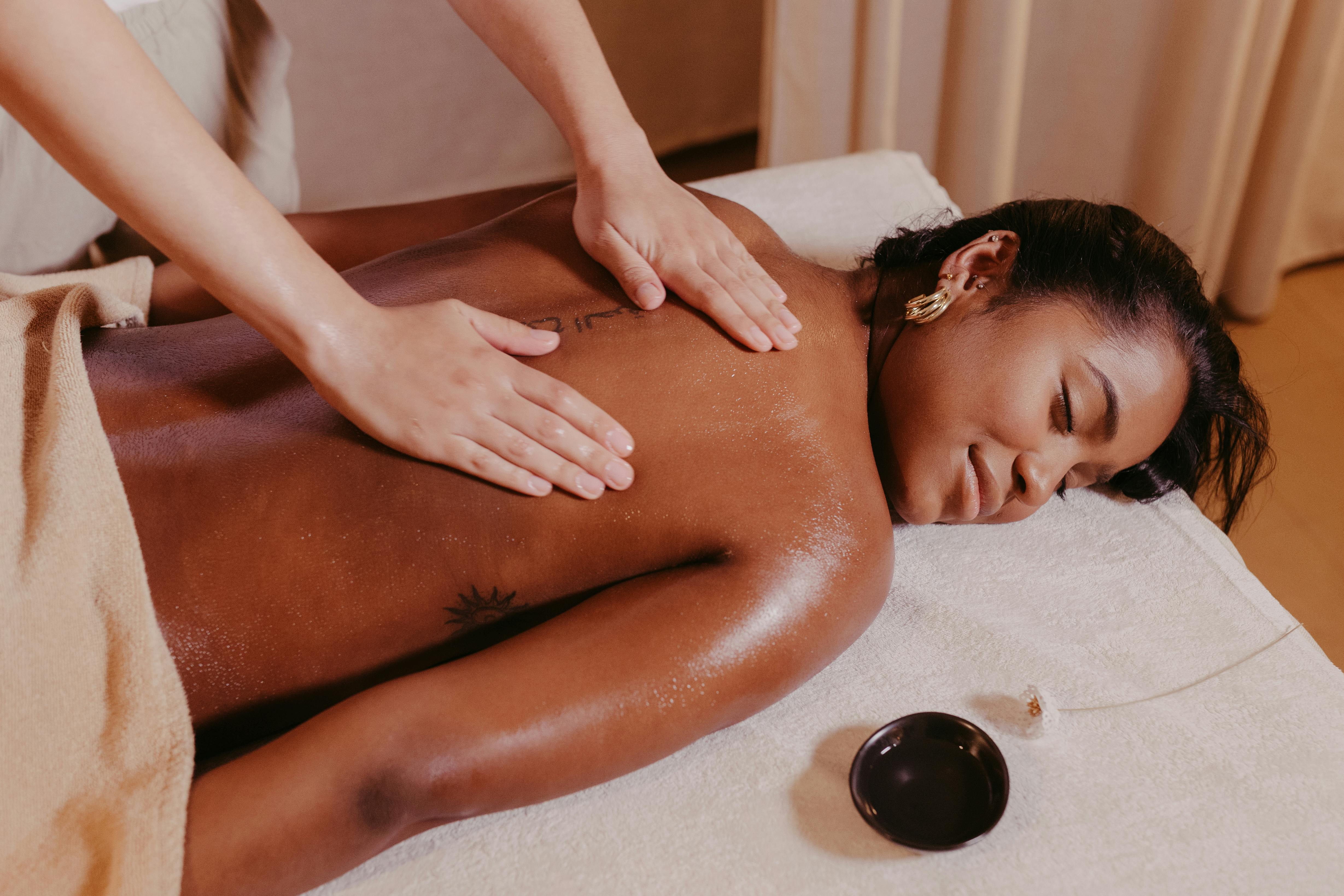
Swedish massage is renowned for its long, slow, and flowing strokes, which gently work the muscles and provide a more profound relaxation. The calming pressure and rhythmic movements ease tension, improve circulation, and encourage a sense of well-being.
This type of massage therapy is ideal for first-timers, as it introduces them smoothly to massage therapy without intense pressure. Whether you want to unwind after a stressful day or simply enjoy a moment of peace, Swedish massage offers the perfect balance of comfort and relaxation.
Aromatherapy massage
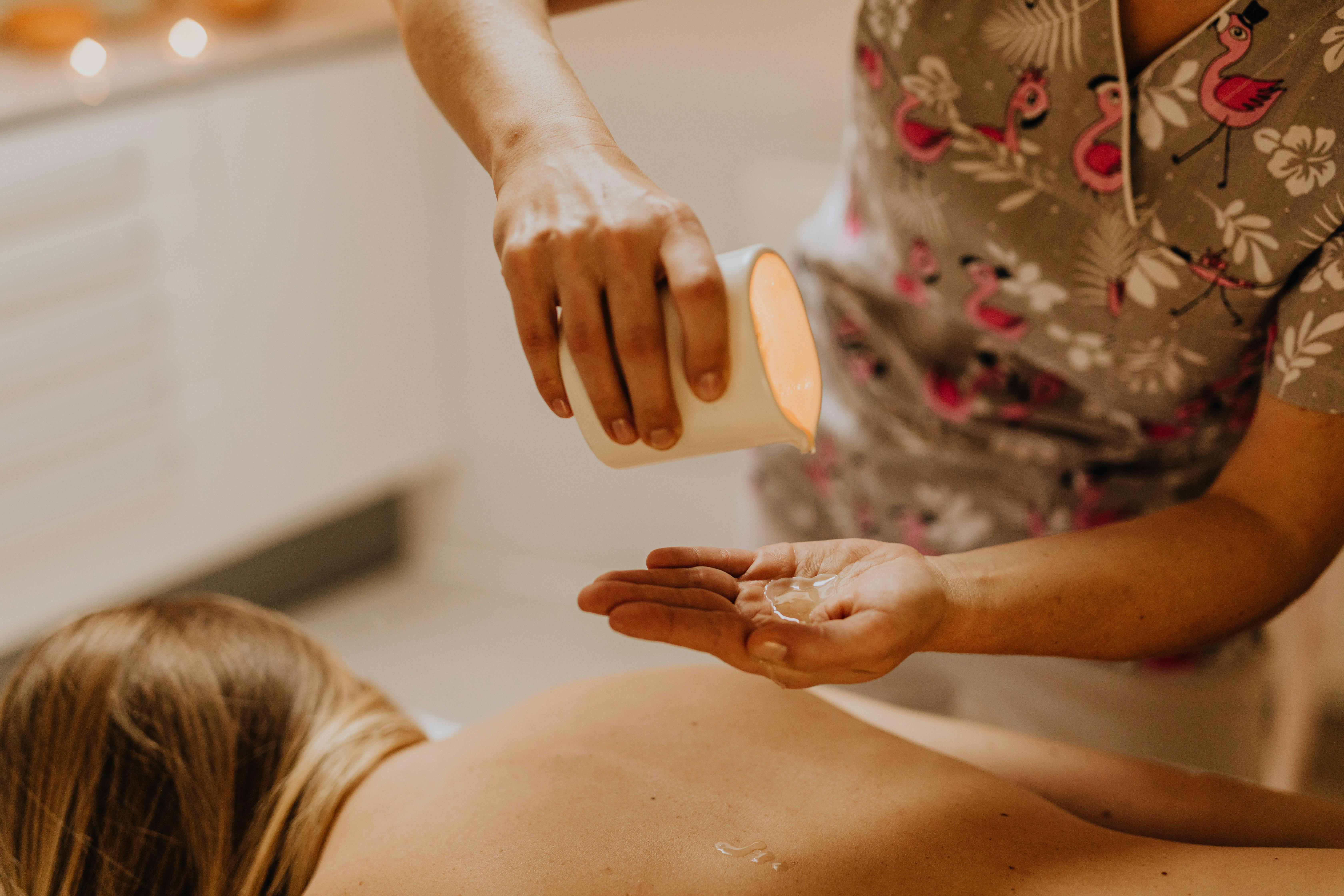
Aromatherapy massage involves gentle massage techniques with the therapeutic benefits of essential oils. It focuses on improving mood and promoting emotional well-being. During the session, carefully chosen oils are inhaled or absorbed through the skin, helping to reduce anxiety, uplift spirits, and encourage deeper relaxation.
Some commonly used essential oils for relaxation include lavender and chamomile. While lavender is known for its calming and sleep-inducing effects, chamomile soothes stress and tension. This type of massage provides physical and emotional relief, making it an excellent choice for those seeking a calming experience.
Deep tissue massage
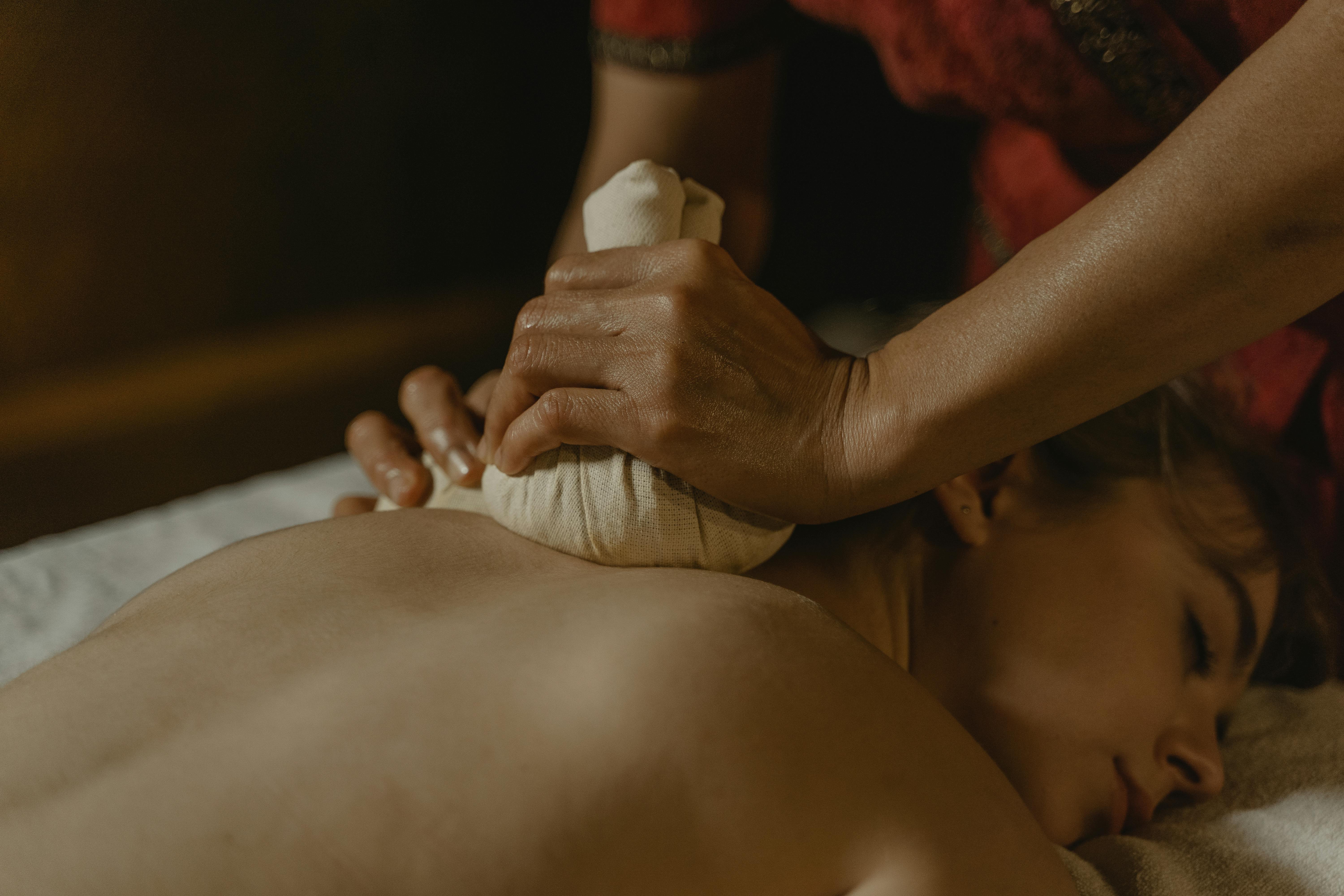
Deep tissue massage targets the deeper layers of muscle and connective tissue, making it particularly effective for relieving tension-related stress stored in the body. It applies slow, firm pressure to release chronic muscle tightness and knots, often caused by stress, poor posture, or repetitive movements.
Deep tissue massage benefits include long-lasting relief from muscle tension, improved mobility, and reduced pain from chronic conditions.
While this massage may be seen as more intense for some clients due to its focus on deeper structures, it’s also highly effective for long-term stress management and muscle recovery. It’s particularly beneficial for those who prefer stronger pressure and want to address persistent tension or discomfort.
Hot stone massage
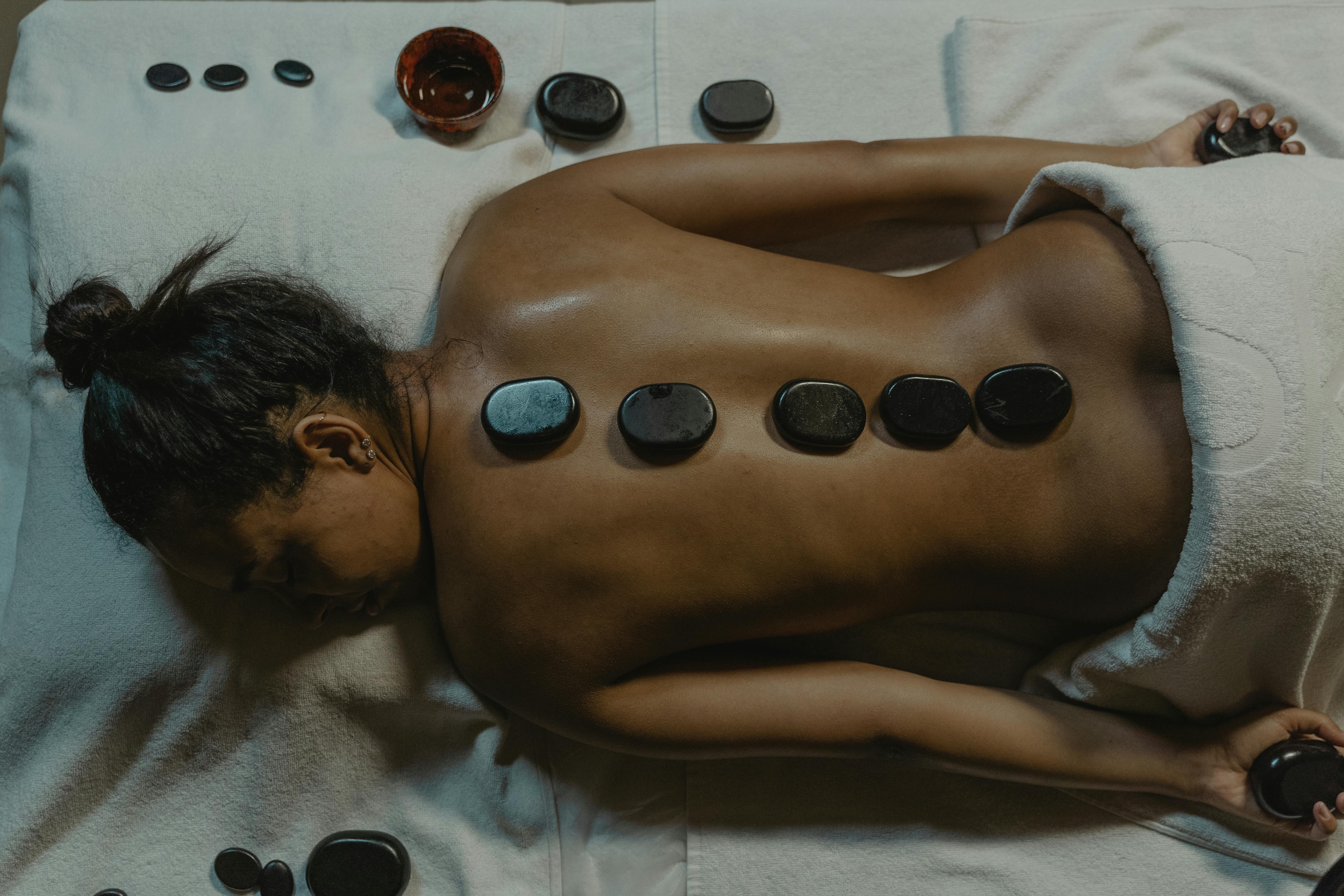
Hot stone massage uses smooth, heated stones by placing them on key points of the body. It helps loosen tight muscles and calm the nervous system. The warmth from the stones can penetrate deeply into the skin by easing muscle stiffness, improving circulation, and offering a deeper sense of relaxation.
This type of massage is a great choice for those who enjoy heat therapy and want to relieve physical tension and emotional stress through soothing and gentle ways. It provides a comforting and relaxing experience.
Reflexology
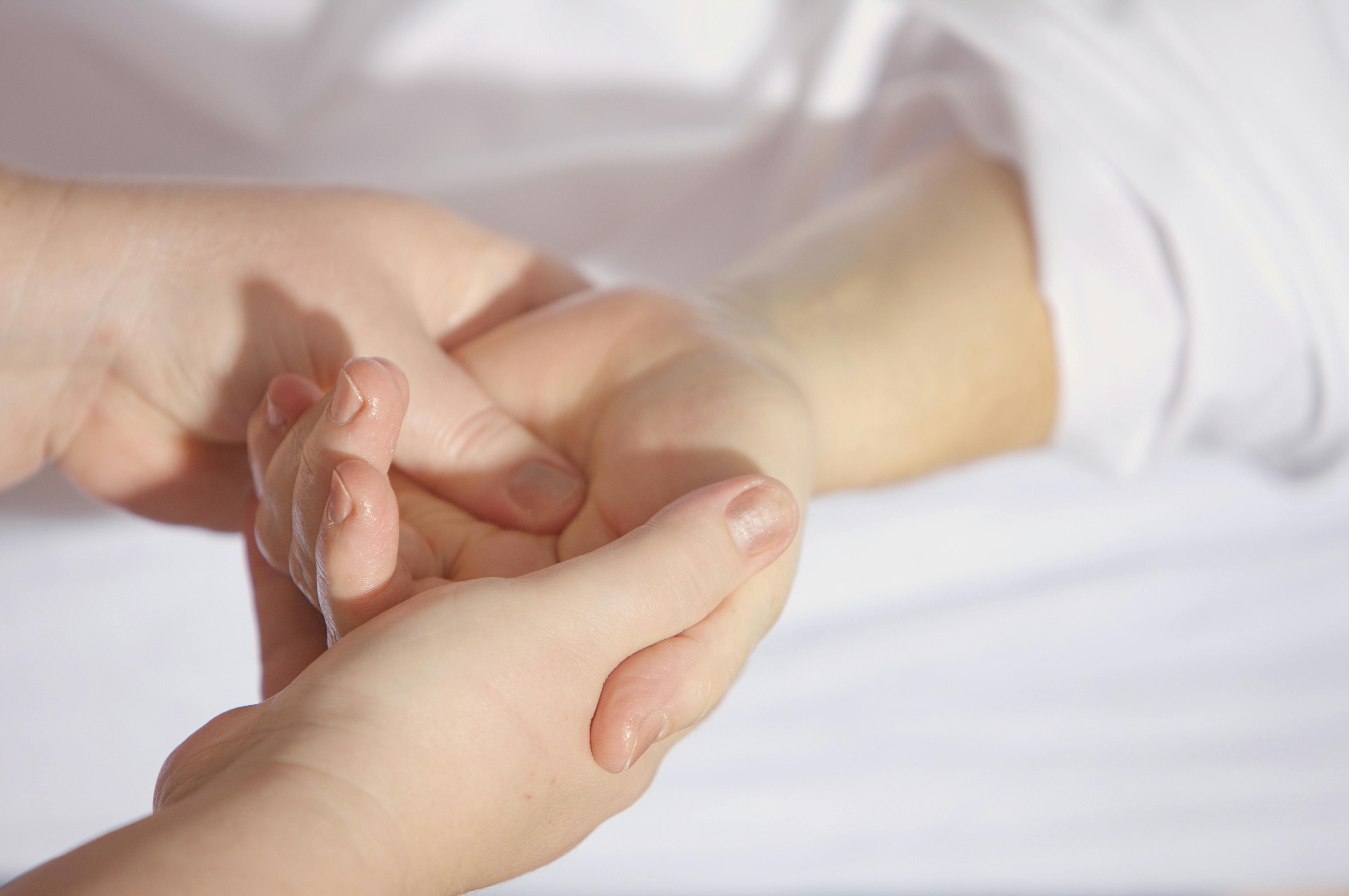
Reflexology massage includes applying pressure in targeted points on the feet, hands, or ears that are associated with different organs and systems in the body. The benefits of reflexology include stimulating the body’s natural healing processes, improving blood circulation, and promoting balance and well-being.
Hand massage benefits include improved circulation, reduced stiffness, and relief from fatigue in the hands. Similarly, the benefits of foot massage include reducing pain and easing tension throughout the body. Additionally, facial massage provides gentle, soothing touches to relax facial muscles.
For those who prefer not to have a full-body massage, reflexology is an ideal option. It offers a deeply relaxing and revitalizing experience through targeted pressure on smaller areas.
Shiatsu massage
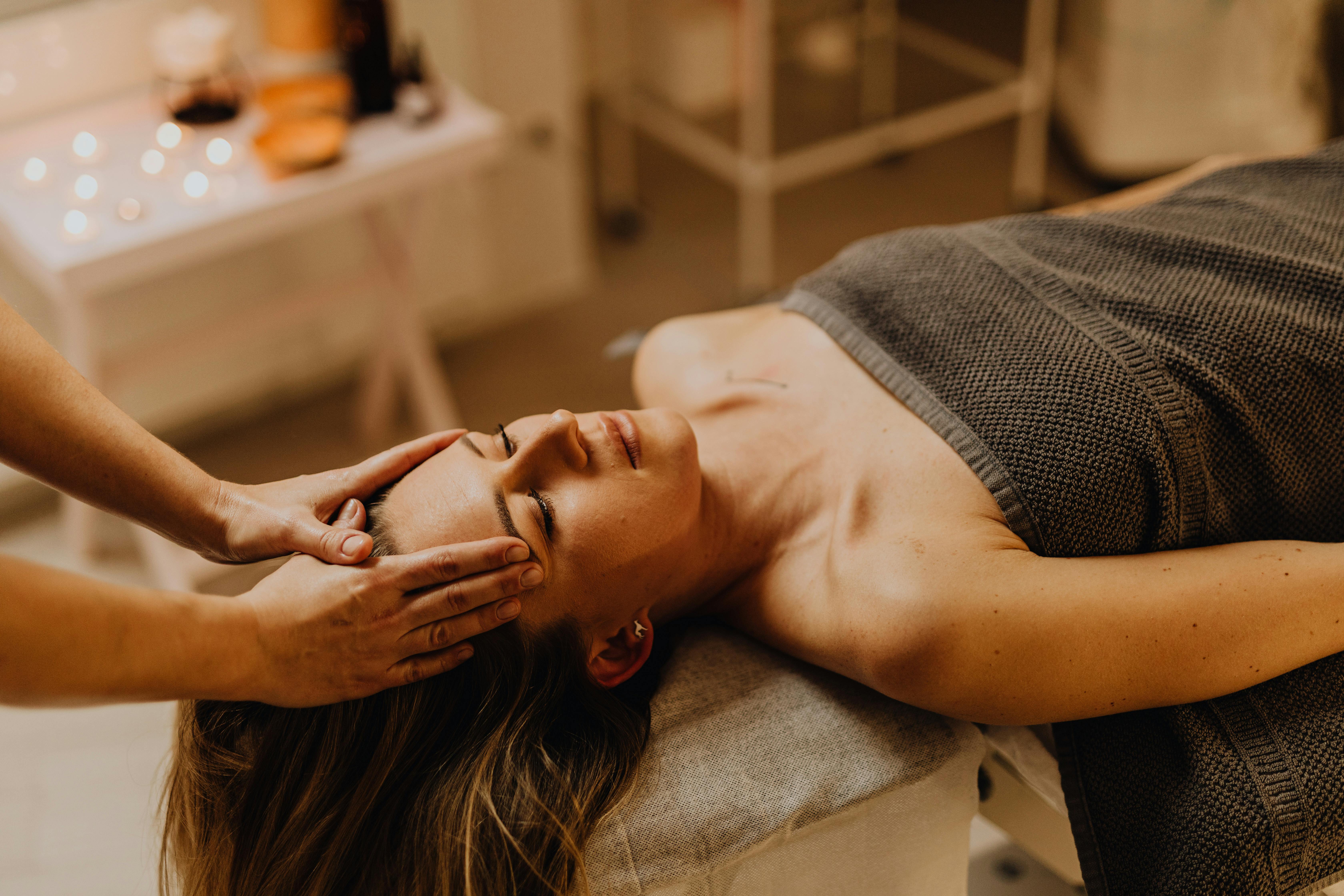
Shiatsu massage is a traditional Japanese massage therapy that is rooted in the principles of Chinese medicine. It involves applying rhythmic finger pressure along the body’s energy lines, or meridians, to stimulate the flow of vital energy, also known as Qi.
Shiatsu helps balance the body’s energy, relieve emotional tension, and promote physical and mental harmony by focusing on specific points. It’s particularly beneficial for those who are looking for a holistic approach to relieve stress and improve wellness overall.
Choosing the Right Massage for You
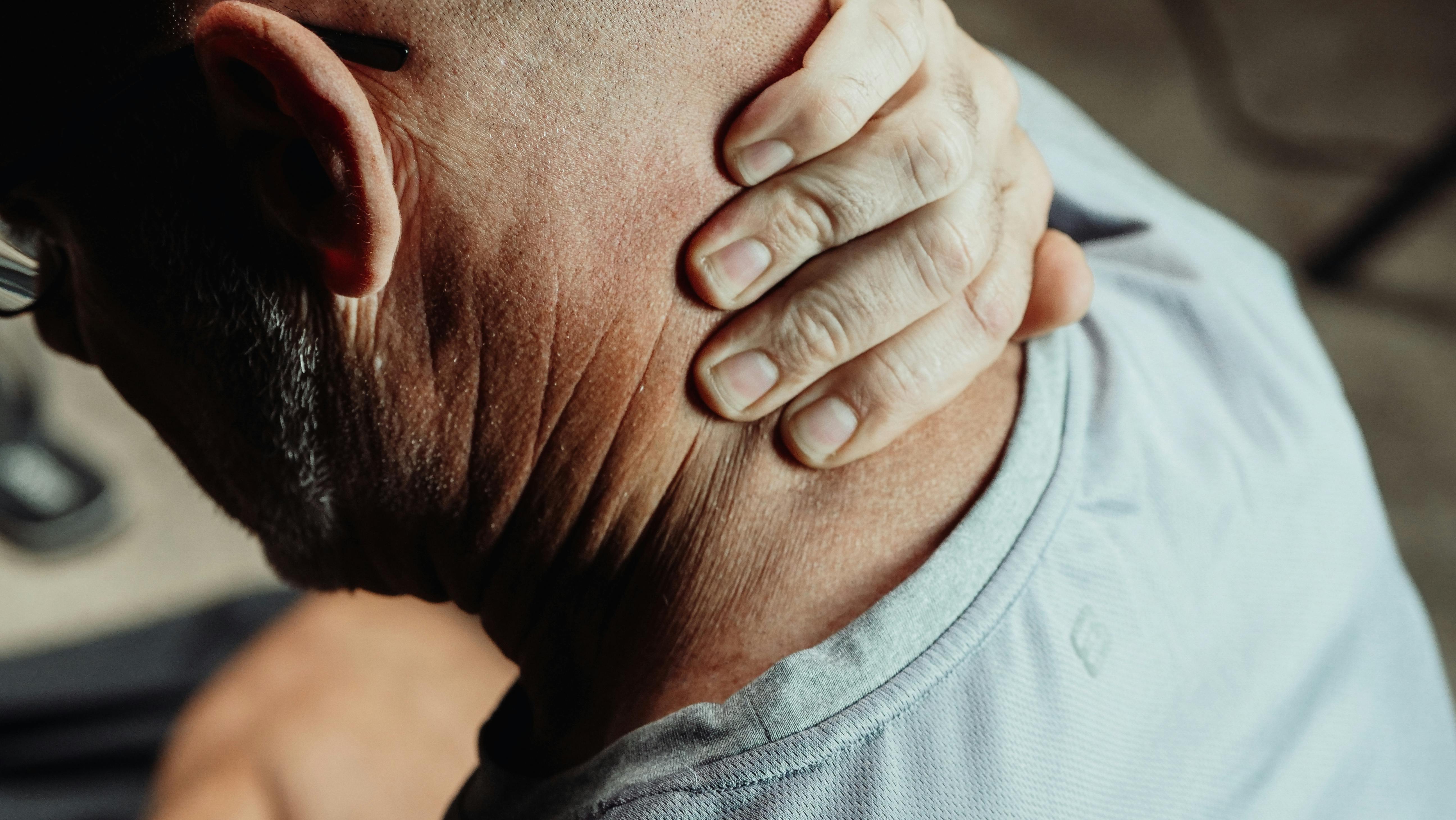
Finding the best massage for stress and anxiety can also be a matter of personal preference. While some people prefer light, gentle pressure, others may benefit from deeper and more targeted work.
If you’re sensitive to touch or new to massage therapy, it might be best to start with a Swedish or aromatherapy massage to feel more comfortable. On the other hand, if you suffer from chronic muscle tension, you may prefer deep tissue benefits or hot stone options.
Trying out different massage styles can help you find the best match, so discussing your symptoms and pressure preferences openly can also be a good way to start. A good massage therapist can help you tailor the session to meet your individual needs and help you feel more at ease.
Whether you want to focus on relaxation or muscle relief, AIAM massage services can help guide you in choosing the most suitable treatment for your specific needs and concerns. For even more helpful guidance, you may want to check out the signs you need a massage for stress relief.
Tips to Maximize Relaxation During Your Massage
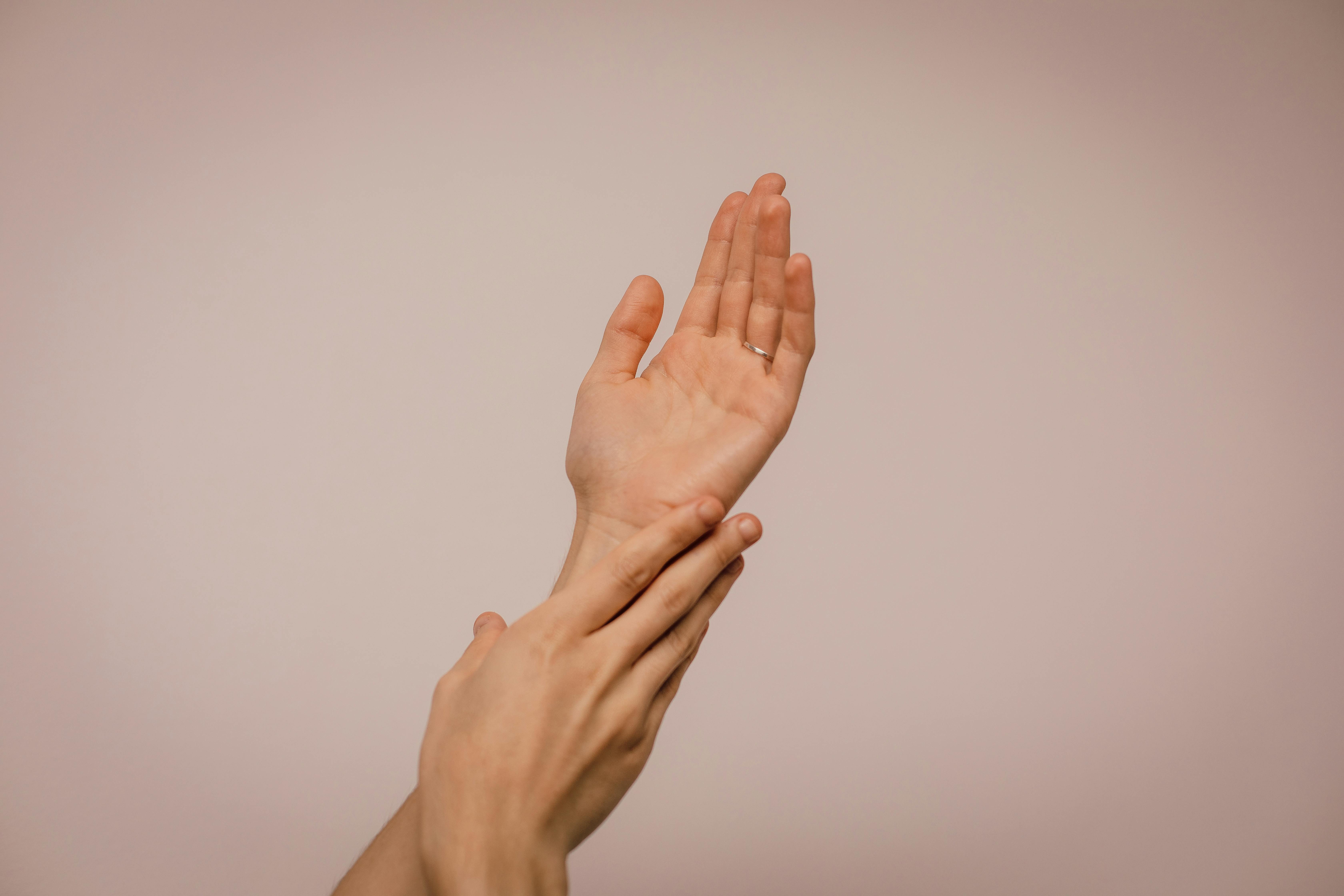
To get the most out of your massage session, you ought to be prepared beforehand. Try deep, steady breathing before and during your session to help your body feel more relaxed and in the moment.
Arrive early to your session and choose a quiet time of day, if possible. This helps you feel less distracted and rushed throughout the session.
Avoid caffeine and other stimulants beforehand, and ensure you stay hydrated both before and after the massage. Set aside some time to rest afterward, if you can, so that your body and mind don’t immediately jump into a busy schedule.
Conclusion
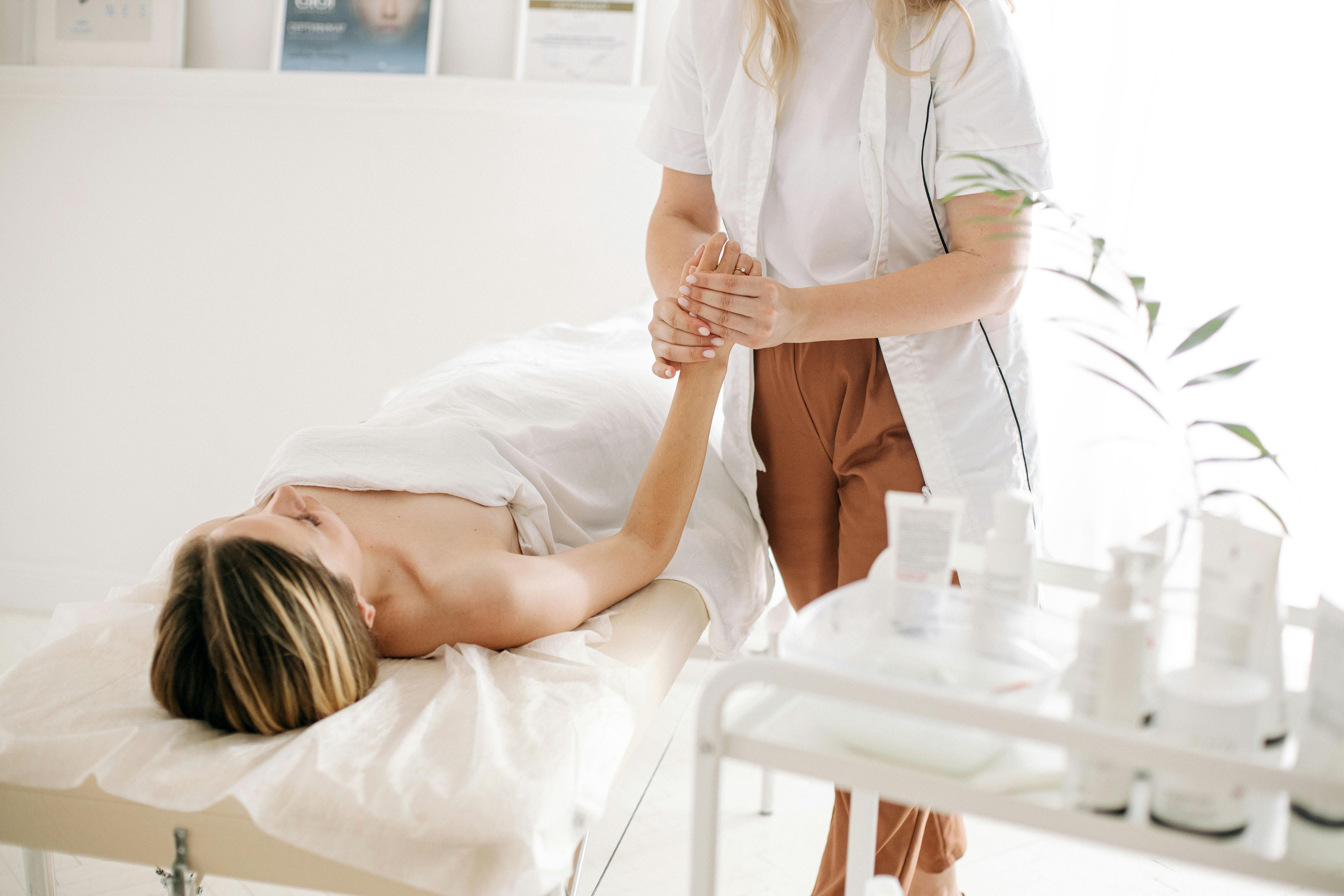
Massage therapy offers a natural and effective way to relieve stress and anxiety from your day-to-day routine. It’s a way to help your mind calm down, your body relax, and your overall well-being improve.
With a variety of options to choose from, it’s worth exploring different types to see what works best for you. Whether you’re looking for emotional balance, better sleep, or a break from your daily tension, massage can be an excellent form of self-care.
Ready to explore or create a career in massage therapy? Check out AIAM’s programs and start your journey toward improving the lives of others.
Frequently Asked Questions (FAQs):
How often should I get a massage for stress relief?
If you have chronic pain, regular sessions every 1-2 weeks would be very beneficial. However, if you’re just starting your journey, monthly sessions would be the best option.
Can I get a massage if I’m pregnant and feeling anxious?
Definitely yes. Getting a massage while pregnant can reduce stress and anxiety. It’s essential to select a qualified prenatal massage therapist who can cater to your specific pregnancy stage and health conditions.
Are there side effects after a massage?
Yes, sometimes there can be mild and temporary side effects, such as muscle soreness, fatigue, mild bruising, or lightheadedness. This occurs because the massage technique involves working around the muscles, which tends to have a similar effect to a workout.